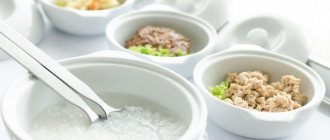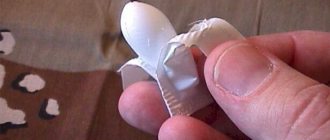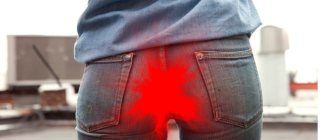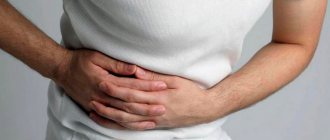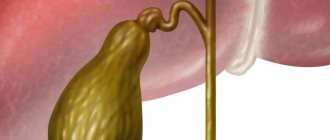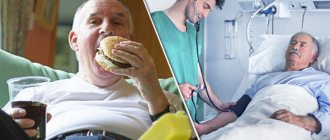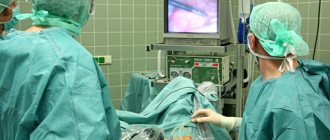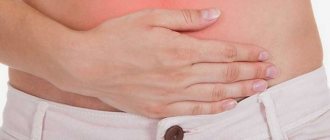Millions of patients around the world turn to proctologists with complaints of hemorrhoids. Conservative treatment is not always effective. Indications for surgical treatment are considered to be the ineffectiveness of conservative therapy or the development of complications of the disease - bleeding, fistulas, significant size of nodes. Hemorrhoids often appear after childbirth in women.
Removal of hemorrhoids is a surgical intervention that helps a person get rid of the disease. After surgery to remove hemorrhoids, the likelihood of a complete recovery from an unpleasant disease increases.
Surgery is the first stage of treatment. After this, restorative treatment is required. Time plays a role - how long it takes for hemorrhoids to heal after surgery. It is important to know the duration of the recovery period and scar healing after surgery.
In the article, we will consider in detail healing after surgery, how to behave after removal, rules and restrictions so that the postoperative scar heals faster and rehabilitation is successful.
Surgery to remove hemorrhoids
How long does it take for hemorrhoids to heal after surgery?
The duration of complete recovery after hemorrhoid removal is directly dependent on the type and extent of surgery.
In the early stages of the development of the pathological process, various minimally invasive surgical techniques are often used. They are low-traumatic, performed on an outpatient basis, without the use of a scalpel. Recovery with this treatment, for example, after ligation of hemorrhoids, occurs in 3-4 days.
In advanced forms of hemorrhoids, hemorrhoids are surgically excised using a scalpel in the form of open or closed hemorrhoidectomy. Recovery for complex hemorrhoidectomy can be 5-6 weeks. Despite the long duration of rehabilitation after this type of surgery, the risk of various relapses is minimized.
Physical activity
Recovery after hemorrhoid removal is impossible without physical activity. 5–7 days after the intervention, the patient is recommended to sit, stand up, and walk around the hospital ward. This will help restore metabolic processes, which is important for the rapid healing of sutures, preventing the formation of hemorrhoidal fimbria, and general restoration of the body.
Intense physical activity, heavy lifting and strength sports are completely excluded. You cannot engage in cycling or exercise on machines. It is useful for patients to walk and perform breathing exercises on the recommendation of the attending physician. Daily walks in the fresh air will help you recover quickly.
Recovery after hemorrhoid removal
Recovery after surgery for the treatment of hemorrhoids is faster and easier if you follow all the doctor’s prescriptions. The specified period includes the following areas:
- drug treatment;
- proper nutrition;
- hygiene procedures;
- sufficient physical activity.
After any method of removing hemorrhoids, all measures should be taken to normalize stool, without which a complete recovery is impossible. The process of defecation should occur regularly, without effort or strain. Soft stool consistency is achieved through diet, proper water regimen and exercise.
To avoid problems with hemorrhoids in the future, it is necessary to lead a healthy lifestyle with the complete exclusion of bad habits.
Hygiene procedures
After surgery to remove hemorrhoids, it is important to strictly follow the rules of hygiene, which include mandatory water procedures in the anus after each act of bowel movement.
If you have hemorrhoids, you need to wash them with cool water or a specially prepared decoction of medicinal herbs that promote rapid healing of surgical wounds.
Experts recommend treating the anal area with an antiseptic solution of furatsilin when going to the toilet.
Experts recommend treating the anal area with antiseptic solutions of rivanol or furatsilin when going to the toilet.
Physical exercise
During rehabilitation, physical activity must be feasible and strictly dosed. For the first time after the operation, it is necessary to observe bed rest, gradually introducing simple exercises: turning over, breathing exercises, stretching, etc. You should try to get up on the second day, avoiding a sitting position.
After about 2 weeks, you can perform therapeutic exercises from a standing position and start walking. It is necessary to completely eliminate heavy lifting and power loads.
Sitting after surgery is allowed for a week, depending on how you feel.
In complicated cases, when the pain does not go away for a long time, when tension occurs, blood comes from the anus, the doctor does not allow the patient to sit down until 3-4 weeks, until the condition normalizes.
What are the possible complications and how to deal with them?
In the postoperative period, the development of the following complications cannot be excluded:
- bleeding of varying severity - a cotton-gauze turunda is used to provide emergency care, then the doctor prescribes hemostatic drugs; bleeding may occur during surgery, as well as several days after it;
- suture dehiscence, which may cause bleeding, pain, and fecal incontinence, requiring emergency surgical care;
- suppuration of a postoperative wound, accompanied by an increase in the inflammatory reaction, an increase in body temperature, the appearance of discharge from the rectum (mucus is released first, then purulent discharge, blood) - antibacterial agents are necessarily prescribed, including ichthyol ointment, potassium permanganate, Vishnevsky ointment, and also, if necessary ( the formation of an abscess, which can occupy a certain volume), repeated surgery is performed, in which the surgeon removes the pus;
- narrowing of the rectal canal with severe difficulty in defecation - a repeat operation is prescribed.
Correct implementation of recommendations in the postoperative period will reduce the likelihood of complications to a minimum.
Treatment of hemorrhoids after surgery
After operated hemorrhoids, drug therapy should contribute to:
- relieving pain and inflammation;
- relief from anal itching;
- facilitating the process of defecation;
- rapid tissue regeneration.
Relief relieves inflammation of the intestines and anorectal area well.
Treatment should be comprehensive, combining general and local drugs. The pain syndrome is relieved by injections with analgesics, suppositories with anesthesol, novocaine, etc. Painkillers Pentalgin, Nise, Diclofenac can be prescribed. An ice pack placed on the sore spot will be effective.
Medicines such as Relief, Anuzol, Papeverine, etc. are good at relieving inflammation of the intestines and anorectal area. Rectal suppositories after surgery, Ultraproct, Methyluracil, Posterizan, accelerate the regeneration processes.
Timely treatment during surgery is necessary to prevent undesirable consequences.
In addition to the treatment described, traditional medicine can be used.
In addition to the treatment described, traditional medicine can be used. The effectiveness of sitz baths with medicinal plants (nettle, chamomile, marigold, etc.) has been proven over time.
Ways to use potassium permanganate
There are several options for using potassium permanganate to treat hemorrhoids. Let's look at how to make baths with potassium permanganate.
Microclysters
Take half a glass of potassium permanganate and pour it into an enema bulb. After lubricating the anus with Vaseline, carefully insert the medical device there. The decision on the number of procedures and duration of treatment with this method should be made by a proctologist.
Sitz baths
Such baths are recommended for external hemorrhoids. They speed up the healing of anal fissures, increase blood flow to the rectal area and relax the anal sphincter. To prepare a healing bath you will need 10 liters of boiled water. Pour the liquid into a bowl and dilute 1.5 tbsp in it. manganese powder. When the bath is ready, immerse the inflamed area in it for 15-20 minutes. At the end of the procedure, blot the anus with a towel and lubricate it with sea buckthorn oil, which will promote speedy healing.
Washing
Another effective way to treat hemorrhoids. With this disease, it is important to maintain personal hygiene. For these purposes, it is recommended to use a weak, cool solution of potassium permanganate, which should be used to rinse the anus after each visit to the toilet.
Nutrition after hemorrhoid removal
A properly selected diet during the rehabilitation period will reduce the recovery time. The diet when removing hemorrhoids should follow the recommendations of specialists, including:
- prescribing complete fasting on the first day after surgery;
- creating the desired stool consistency by consuming approved foods and sufficient water;
- avoiding constipation, which damages the intestinal lining;
- exclusion of gas-forming products;
- adherence to diet;
- proper food processing.
A properly selected diet during the rehabilitation period will reduce the recovery time.
Authorized Products
Hemorrhoids heal faster if you strictly adhere to a special diet, including approved foods:
- various cereal porridges cooked in water;
- fermented milk products (kefir, fermented baked milk, Varenets);
- vegetable broth soups;
- boiled lean meat or fish;
- soft-boiled eggs;
- decoctions of medicinal herbs;
- fruits - apples, plums, bananas;
- vegetables - tomatoes, carrots, cucumbers.
Hemorrhoids heal faster if you strictly adhere to a special diet, including fermented milk products.
It is necessary to create a diet with a minimum amount of toxins. It is important to adhere to the correct daily drinking regimen, including at least 2 liters of clean water.
Prohibited Products
In order to maintain the positive results of the operation to eliminate hemorrhoids for a long time and to exclude relapses of the disease, it is necessary to completely remove some foods from the diet. These include:
- fatty meats and fish;
- spicy, smoked, salty dishes;
- alcohol;
- vegetables and fruits that cause fermentation processes and flatulence: cabbage, legumes, grapes, etc.;
- sauces and marinades;
- sweets;
- sparkling water.
In order to maintain the positive results of the operation to eliminate hemorrhoids for a long time and to exclude relapses of the disease, it is necessary to completely remove sweets from the diet.
Dietary restrictions should be observed throughout life to prevent recurrent conditions.
Reviews
Ekaterina, 37 years old, Moscow
A month has already passed since the removal of hemorrhoids, but I don’t feel well. The hemorrhoids were in a deeply advanced form. The operation was difficult. Despite the fact that I followed all the doctors’ recommendations, the promised recovery did not occur: pain, inflammation, bleeding when straining persists, and sometimes pus forms. Now I am treating post-operative consequences.
Maxim, 48 years old, Sevastopol
Due to driving a car for a long time, I developed small hemorrhoidal lumps in the rectum, which became very inflamed when drinking beer and spicy meat. I turned to a specialist with my problem. Hemorrhoids were removed with a laser. I managed to quickly recover from the operation and return to work.
Among proctological diseases, the most common is hemorrhoidal disease. The pathology is accompanied by unpleasant symptoms, reducing the patient’s quality of life. What to do if you are worried about hemorrhoids after surgery?
In some cases, the disease becomes the cause of disability for people of pre-retirement age. The pathology is also dangerous for its complications, which often lead to posthemorrhagic anemia.
If a few decades ago hemorrhoids were treated with surgical intervention, today coloproctologists have quite a few minimally invasive methods in their arsenal. They are characterized by painlessness, low trauma and a short rehabilitation period.
Traditional methods of treatment have been improved, and doctors use the latest equipment in their work. For example, monopolar and bipolar coagulators, laser and radiofrequency scalpels. Thanks to these technologies, the healing and recovery process after minimally invasive surgeries is easier and faster.
But even after successful treatment, hemorrhoids can be disturbed again. Therefore, it is important to know what to do if hemorrhoids appear after surgery.
Possible complications in the postoperative period
When removing hemorrhoids surgically, rare complications and negative consequences are possible. These include:
- urinary retention caused by the use of epidural anesthesia;
- severe pain arising from a large accumulation of nerve endings in the rectal canal;
- exit of the intestine from the anal canal due to malfunction of the sphincter caused by illiterate actions of the surgeon;
- penetration of infection into the wound due to neglect of hygiene rules;
- fistulas;
- narrowing of the anus due to incorrectly placed sutures.

